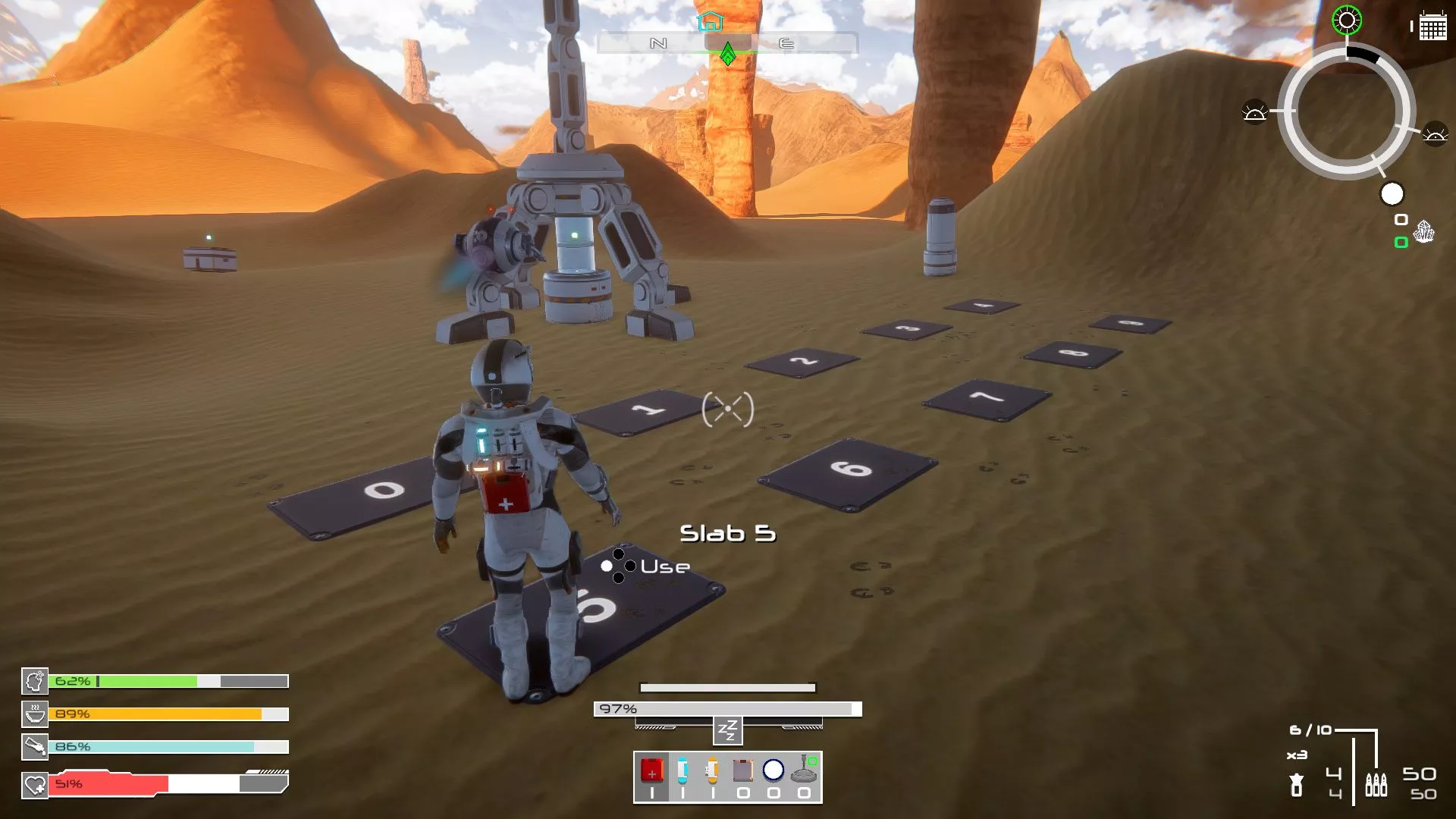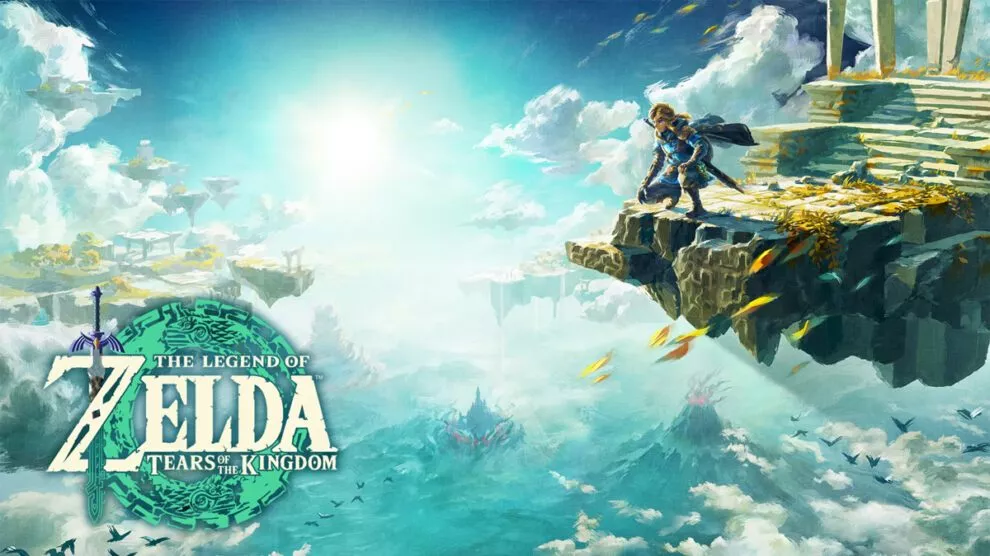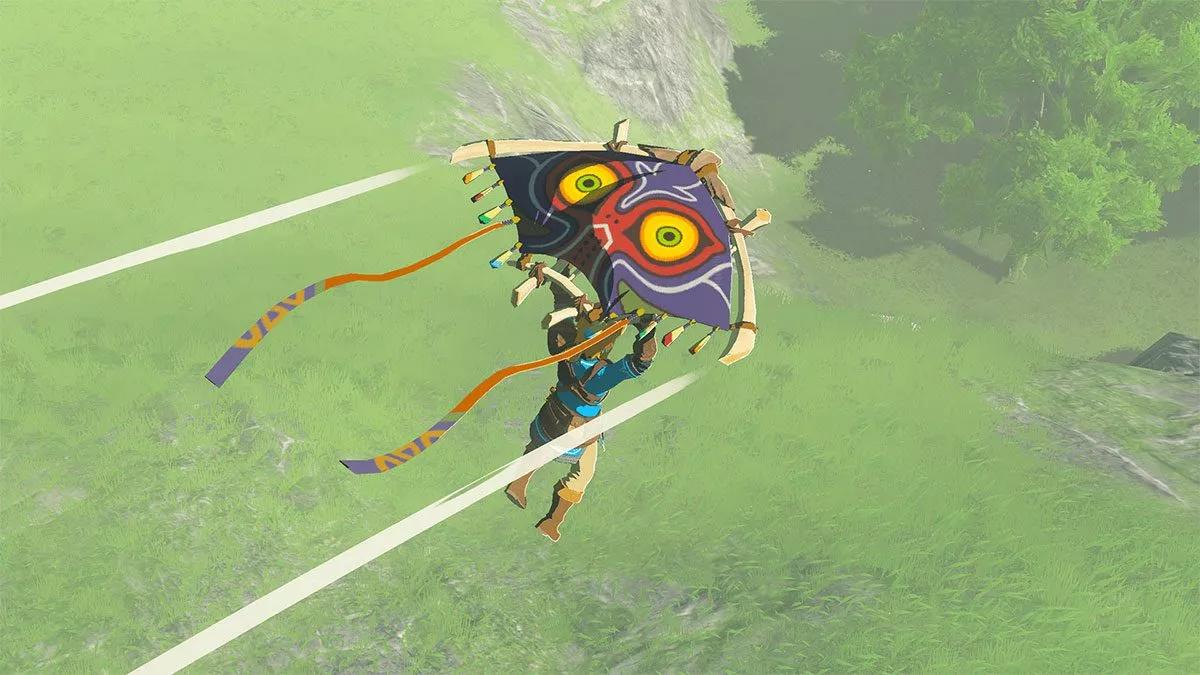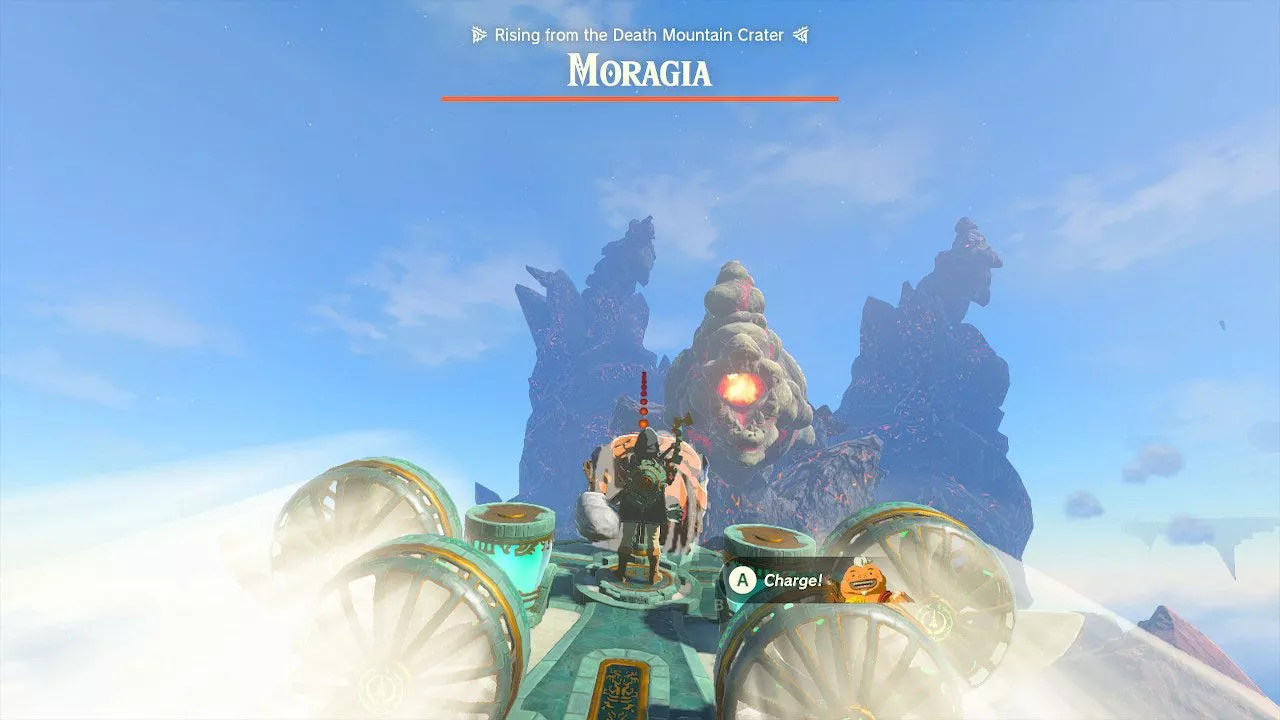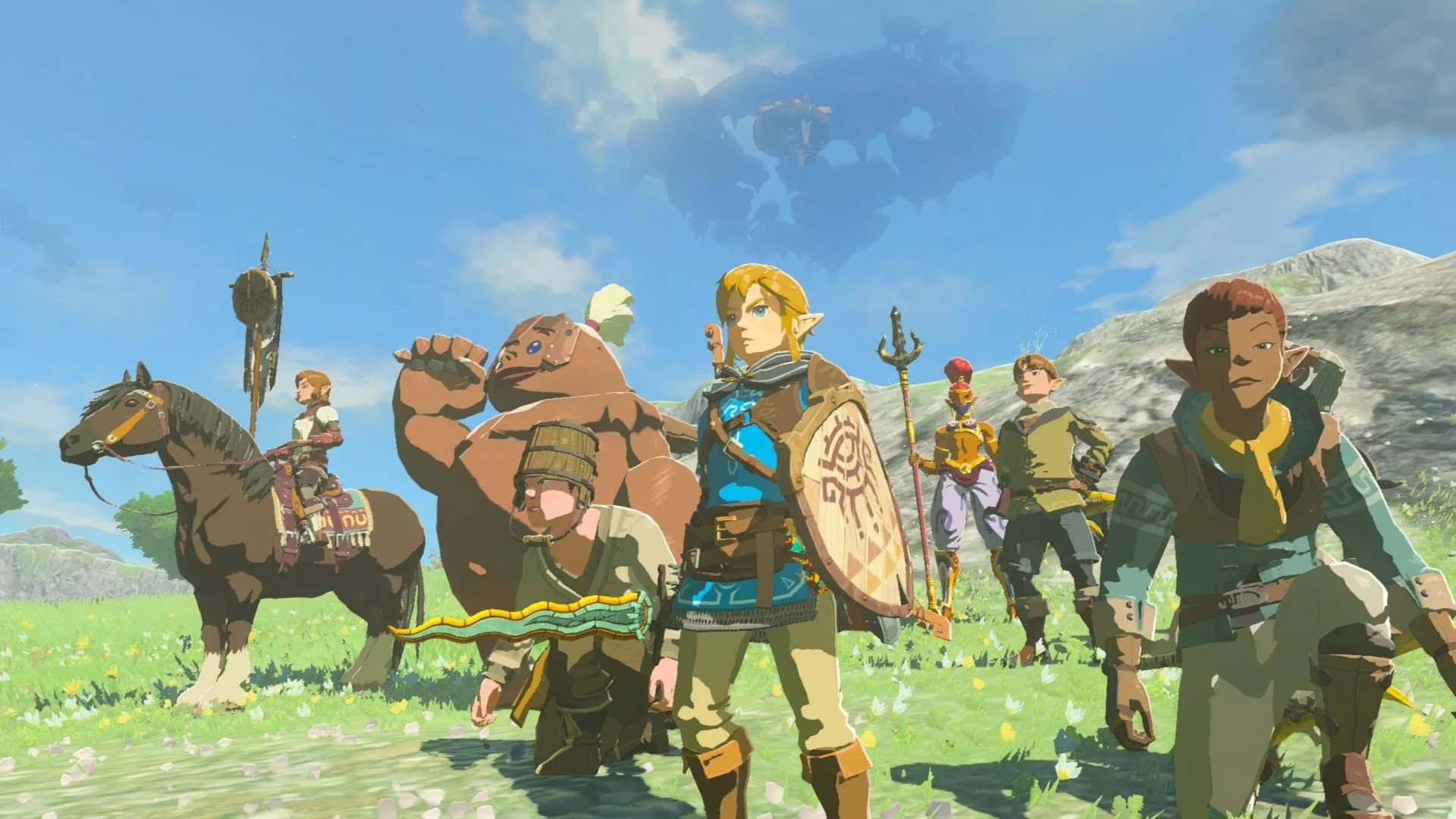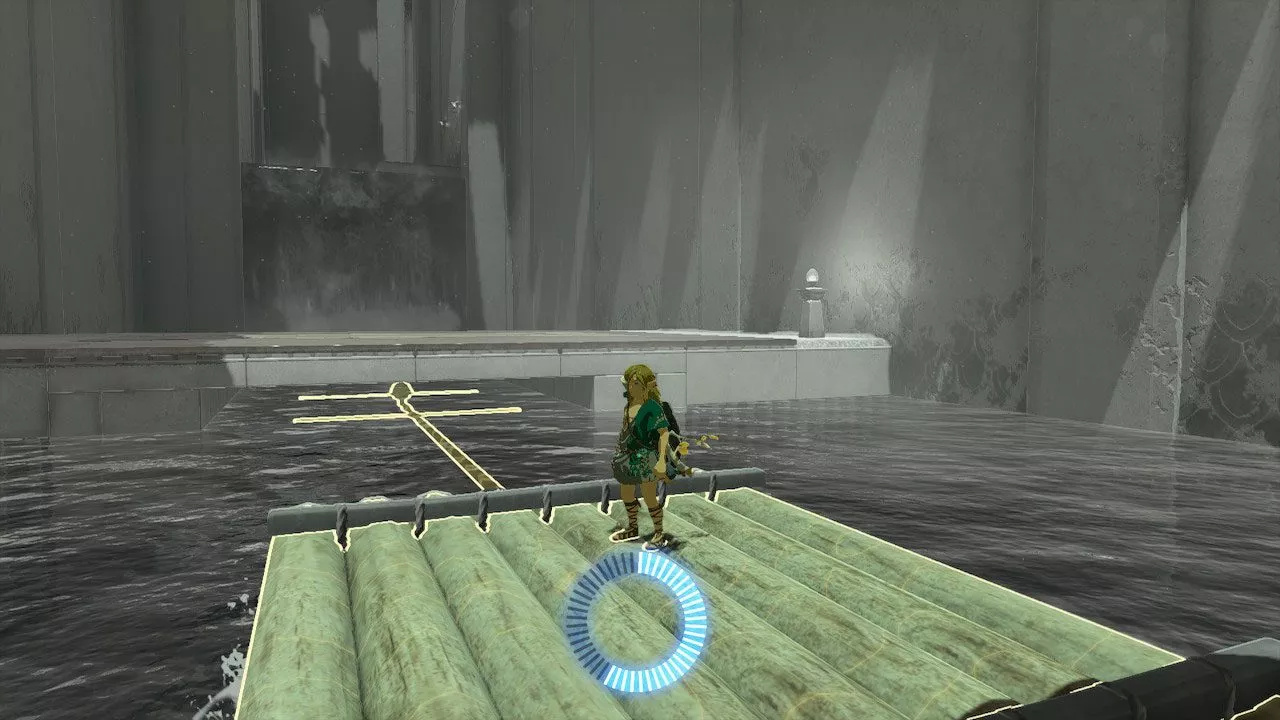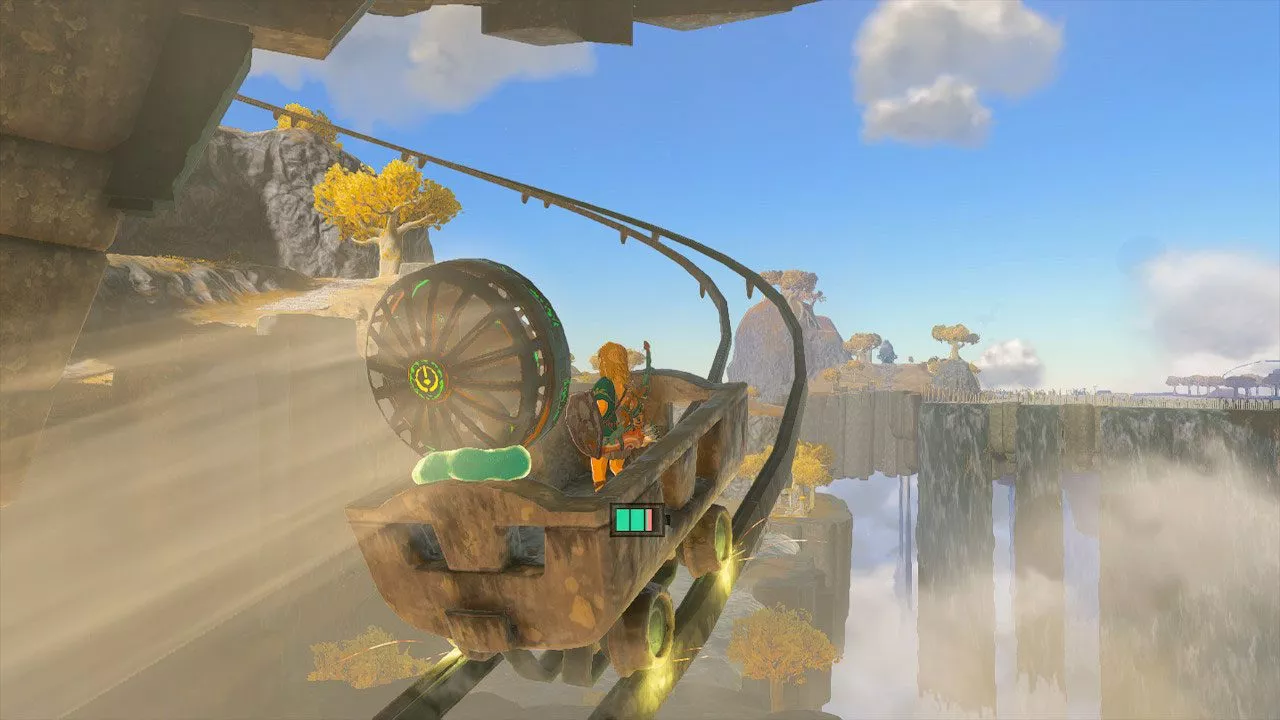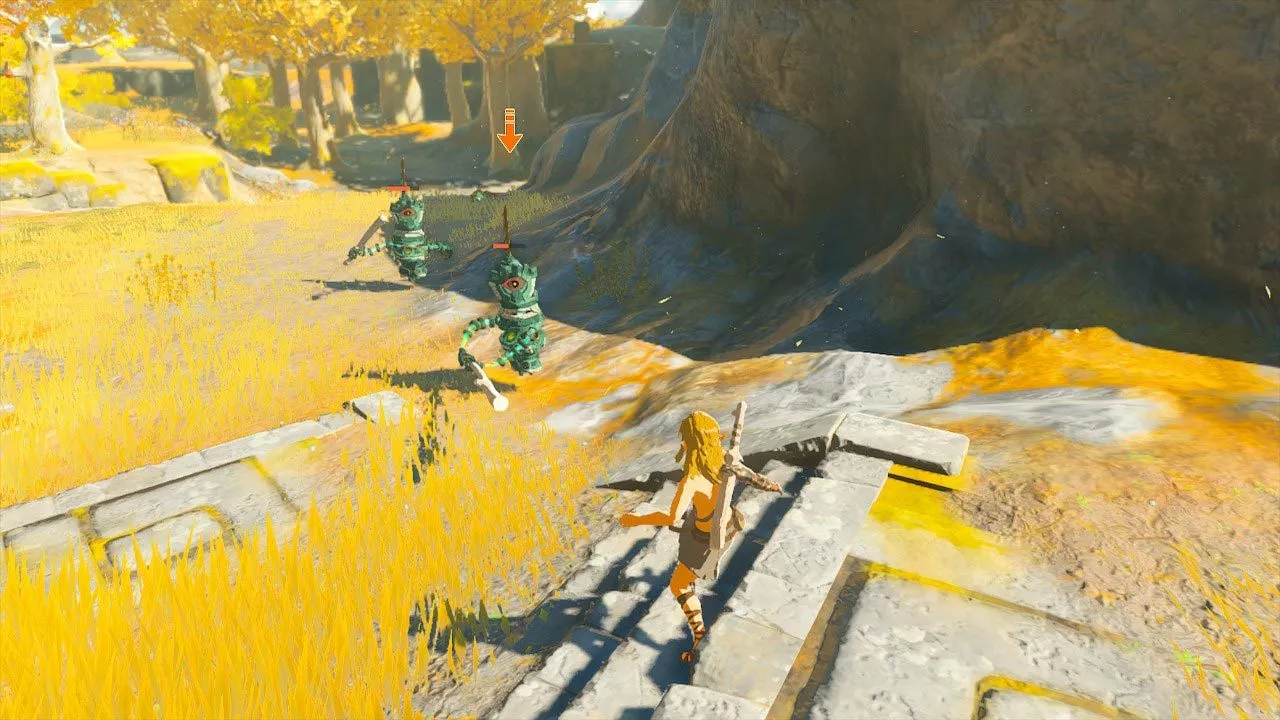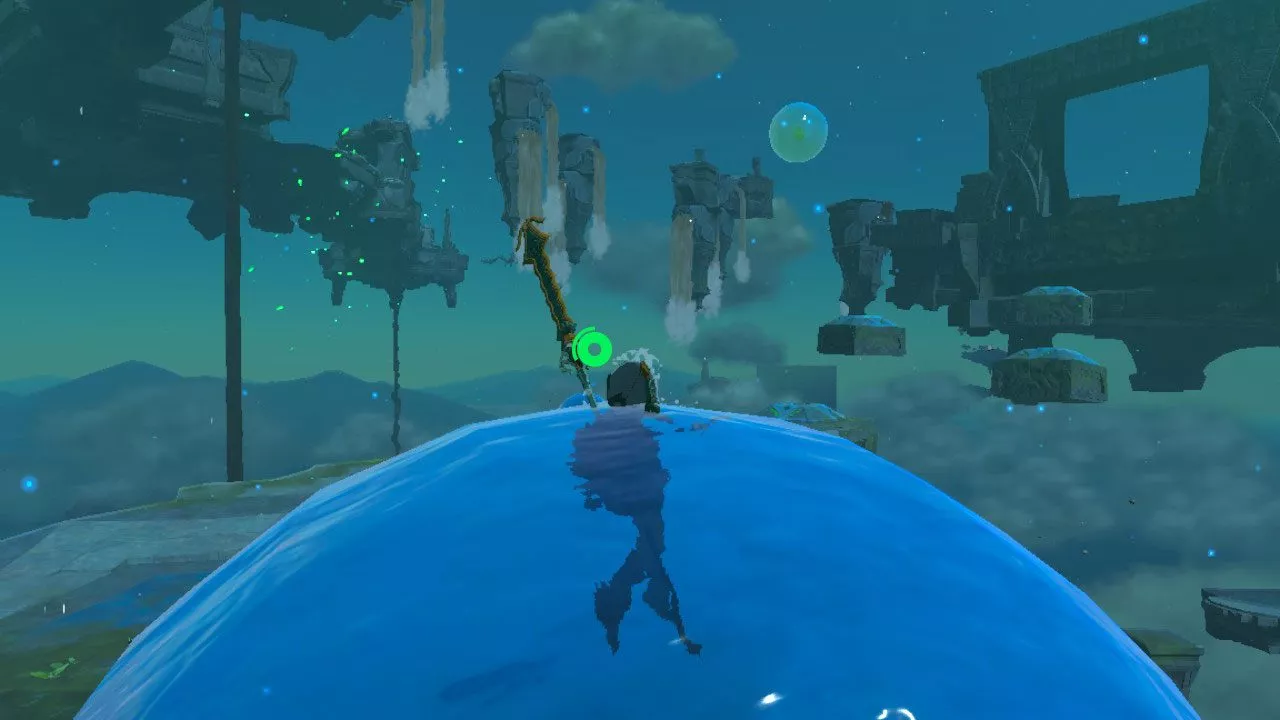This sequel may look very similar, but its creative freedom changes everything.
The Legend of Zelda Tears of the Kingdom is the most familiar a Zelda sequel has ever felt, at least on the surface. But as you take to the skies, and delve into the depths below Hyrule, that sense of déjà vu turns to pure elation. By leaning heavily on the world established by its predecessor, Tears of the Kingdom provides meaningful player freedom on a scale I’ve never experienced before. It may look the same and feel familiar, but Tears of the Kingdom delivers an entirely new approach to gameplay.
How you tackle puzzles, combat and exploring the world is up to you, and yet it never becomes an aimless sandbox. It always has purpose, and that’s why Tears of the Kingdom is such a rousing triumph. With a host of unconventional tactics at Link’s disposal, you may fail, fail and fail again; it’s constant trial and error. But when you finally succeed, the sense of achievement is unrivalled.
There are some parallels to Majora’s Mask. By reusing assets and levering Ocarina of Time, a sudden sequel in 2000 was allowed the freedom to experiment in ways not possible starting from scratch. By revisiting the world of Breath of the Wild, and largely keeping its assets, combat, quest and design structure, Nintendo has dedicated its focus to puzzle-solving and providing unprecedent freedom.
There are some considerable differences, too. This wasn’t a quick follow-up, arriving six years after Breath of the Wild, and Tears of the Kingdom follows a more conventual sequel structure; but it’s just as momentous as Majora’s Mask. After the opening hour, which delivers most of the tools required to complete the game, it’s clear why the sequel to Breath of the Wild spent so much time in development.
Link’s abilities to manipulate the world resemble those from Breath of the Wild, but provide far more ingenious solutions to his many conundrums. You can still move around selected common objects, but this time with Ultrahand, Link can attach them together with ease to create his own vehicles and structures.
Through harnessing the ancient Zonai Kingdom’s technology, those impromptu rafts, vehicles, planes, platforms and bridges can be powered by fans, rockets, balloons, wheels with drive, and even the ability to float. The powered Zonai tech is littered strategically around Hyrule, providing an indication of possible solutions. But they can also be acquired at random in capsules and pocketed, allowing them to be used in situations not necessarily intended.
Combined with Link’s other major new abilities – including being able to rewind and replay the movement of an object with Recall, and launching directly into and through solid surfaces above with Ascend – Tears of the Kingdom points you towards the destination but leaves the journey entirely in your hands.
I’ve brute forced convoluted ways to reach what could have been an easy goal more times than I can remember, but it doesn’t matter. Tears of the Kingdom never strays into frustration; only the successful attempts stick with you.
With enough resources, you can build mammoth bridges that struggle to fit on-screen. Or perhaps you’d prefer to move a platform around using Ultrahand, and then rewind its path using Recall to implement your own moving platform. There’s no way my clumsy answers were intended solutions, but Tears of the Kingdom still gives goosebumps when the iconic Zelda jingle acknowledges success, regardless of how you got there.
Tears of the Kingdom could have been called The Legend of Zelda Ultrahand. Such is your time spent moving things around and stitching them together. It’s the primary tool, along with replaying movement, but the Ascend ability follows closely behind. It’s so different to anything we’ve encountered before that it’s easily forgotten, even when the answer is right in front of you.
You’ll still spend ample time climbing walls and gliding across Hyrule. But now you can beam up, and through, most surfaces within reach. This ranges from putting Link atop a platform in view to launching up from a cave deep underground to the mountainous peak above, and everything in between. It’s such a different mindset. Climbing a sheer cliff isn’t always the answer; at least not the only answer.
Along with exploration and traversal, this also applies to Tears of the Kingdom’s many shrines and the return of Zelda’s temples, at least in name. Shrines continue to serve as small, single goal mini-dungeons. With more inventive options at Link’s disposal, there are considerably more ways to reach that goal, even if some are clearly wrong; it’s possible to be wrong, but successful.
Some shrines are a breeze, while others are perplexing until it suddenly dawns upon you. Regardless, Tears of the Kingdom’s freedom carries a sense of genuine accomplishment when you succeed. It’s even more fulfilling when you do it in such an unconventional manner that it couldn’t possibly have been intended.
Temples return to fill the void of larger dungeons, which weren’t prevalent in Breath of the Wild. It’s not a return to the traditional scripted Zelda formula of small keys, a key item and a boss key. They’re designed around the same freedom to approach puzzles, but they do provide more intrinsic multi-level dungeons to conquer and ultimately conclude with a boss fight. Like A Link Between Worlds, the order in which these are completed is up to you. They can be tackled early, but without having completed many shrines first, you won’t have much in the way of heart containers or stamina.
Alternatively, you could cover a lack of hearts or a stingy stamina wheel by learning to cook. Concocting elixirs to survive the cold and collecting ingredients to replenish health is tedious in most RPGs – I’ve scarcely bothered with similar mechanics in other games since Breath of the Wild. Yet, once again, I haven’t found it to be a chore in Hyrule. Without hearts hiding in tall grass or commoners’ pots, Link has to eat to replenish his health, but there’s only so far munching on mushrooms will take you.
Combat follows Breath of the Wild’s established disdain for weapon longevity. Limited durability forces you to adopt a variety of tactics. You won’t always have a sword to partner your shield, so are forced to experiment with slow two-handed weapons and the reach of long spears – or sticks cobbled together, as the new Fuse mechanic allows Link to craft weapons on the go.
While cooking is a little laborious, crafting items is simple. It’s a matter of selecting an appropriate object on the ground and sticking it to Link’s currently equipped weapon or shield. This normally adds considerable durability and power, but may come at the cost of speed as a weapon becomes bigger and bulkier. It may also add reach or completely change the attack – suddenly, Link may be wafting an enemy off a ledge with a crafty fan rather than smacking them with a bat.
While Ultrahand is mandatory, and you’ll need to use Recall and Ascend in certain situations, Fuse is the most optional of the bunch — but potentially the most powerful. A strong weapon is the easiest way to smash boulders impeding your path and an axe is always handy to cut down trees to assemble a makeshift raft, but even these only support one of many ways to progress. You could choose to use decaying weapons as disposal tools with a short shelf life or spend hours dabbling with inventive and increasingly explosive combinations – or maybe you’d prefer to build a dubious rocket-powered plane and skip the encounter completely.
Tears of the Kingdom returns to a known Hyrule, but on a much larger scale. If Breath of the Wild’s shrine-centric incarnation was inspired by Kyoto, Tears of the Kingdom takes its cues from Tokyo by building its already sprawling world up – and down. It’s one of the biggest, and most engaging, open worlds I’ve explored; and it’s achieved by taking the existing world and layering it like a sponge cake. The familiar ground level of Hyrule – which includes its on peaks and troughs – is joined by considerable real estate in the sky inspired by the island layout of The Wind Waker, and expansive land in the depths below.
It’s very much the realisation of Skyward Sword’s world above the world, but much bigger and with a seamless connection. Aside from loading screens when fast travelling and entering shrines, temples and chasms to emerge in the depths, Tears of the Kingdom keeps the action rolling. Jump from an island high in the sky and Link will dive, glide or plumet until he reaches the ground level below.
The tools empower creativity. But it’s how the massive world and open-ended playbook combine with the quest structure that makes Tears of the Kingdom so deeply engaging. Unlike most games that give you the keys and leave you to your own devices, everything you do in Tears of the Kingdom feels like it serves a purpose; progress is always being made.
You could play this close to a traditional Zelda game and follow the story, bypassing much of the optional areas. Perhaps you’d prefer to get stuck into the side quests, likely to unearth potent new gear and meet some of Hyrule’s quirkiest inhabitants. Or maybe you’d prefer to park the itinerary and see where the world takes you. See something that looks cool? Go take a look. Only this time, you’ve got a plethora of different ways to get there, beyond your trusty paraglider.
The Switch is well into its twilight years, but to address the elephant in the room, it’s technically a very solid experience. For such a large world, Tears of the Kingdom runs astonishingly well, and proves that Pokémon Scarlet and Violet’s technical blights are at least in part issues with their optimisation. Tears of the Kingdom extracts everything the Switch has left to give, but it proves the ageing hybrid handheld-console is still capable.
The caveat is that it runs well, for a Switch game. But even after all these years, I’m still impressed when playing such an ambitious game on a handheld; it’s amazing. Although, such is the scale of Tears of the Kingdom that it’s best played on a TV, where its low-res blemishes are more noticeable. Now and again, there is also some considerable slowdown when combat becomes hectic or you chain together destruction. But across an epic adventure that lasts between 50 and 100 hours, these struggles are surprisingly few and far between.
If there was an internal debate around delaying Tears of the Kingdom for new hardware, common for the Zelda series, Nintendo made the right call. Even if I am already looking forward to the higher resolution and improved framerate remaster next-generation. There are a few technical wobbles, but that’s easily offset by being a well optimised, polished and complete game. That puts it well ahead of the pack in 2023.
The Legend of Zelda Tears of the Kingdom is one of the most creative, satisfying and rewarding games I’ve ever played, all within a familiar and greatly expanded Hyrule. How you approach combat, exploration and puzzle-solving is only limited by your imagination, and it avoids the common sandbox blunder of becoming aimless. Everything feels meaningful and rewarding, capped by the iconic Zelda jingle to validate even the most ridiculous successful ideas. Tears of the Kingdom is the closest a Zelda sequel has looked and felt to its predecessor, but it’s another revolution in its approach gameplay. For the second time this year, Nintendo has improved upon a masterpiece.
The Legend of Zelda Tears of the Kingdom was reviewed using a promotional code on Nintendo Switch, as provided by the publisher. Click here to learn more about Stevivor’s scoring scale.
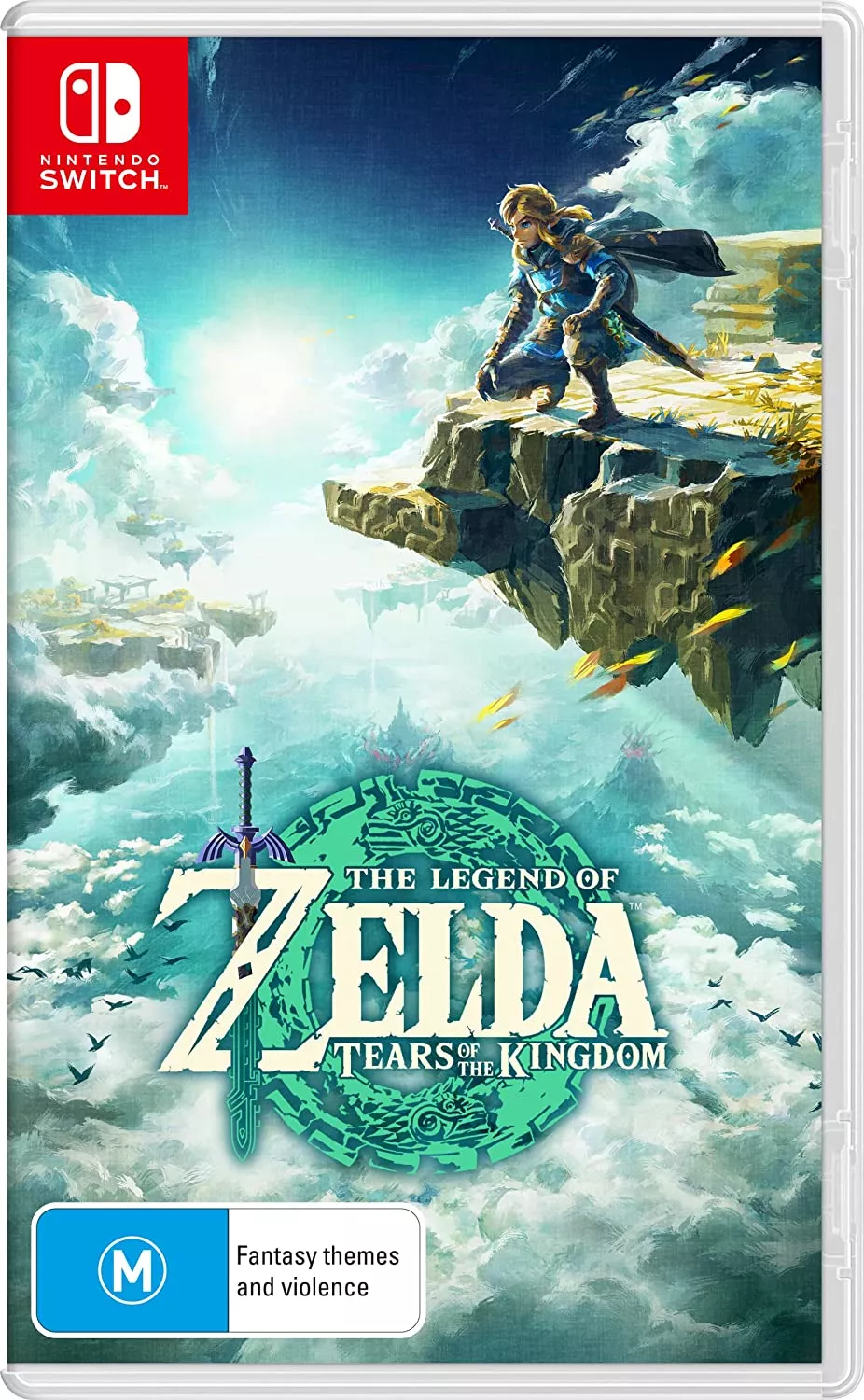 |
The Legend of Zelda Tears of the Kingdom12 May 2023Switch |
This article may contain affiliate links, meaning we could earn a small commission if you click-through and make a purchase. Stevivor is an independent outlet and our journalism is in no way influenced by any advertiser or commercial initiative.





